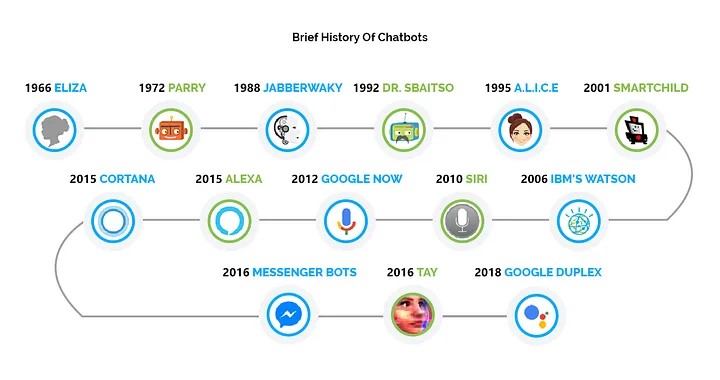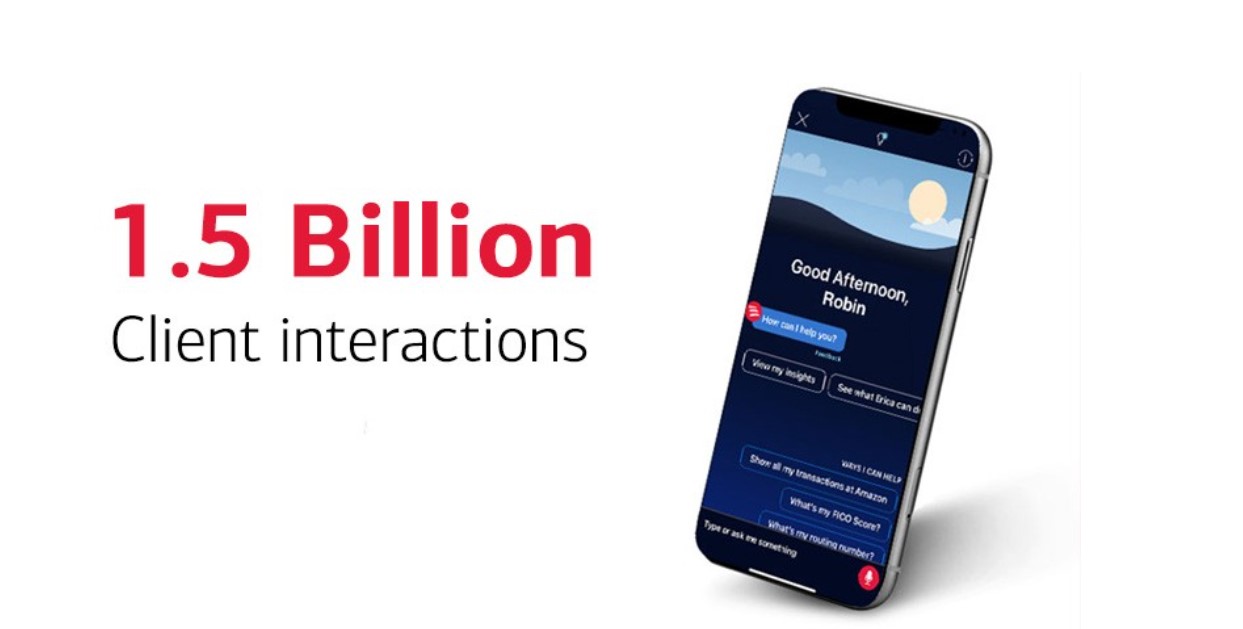In today’s ever-changing world of technology, Artificial Intelligence (AI) and chatbots have emerged as game-changers for businesses looking to streamline their operations and save costs. These cutting-edge technologies are not just revolutionizing how companies interact with customers; they are also opening up new possibilities for making operations more efficient and budget-friendly. Now, let’s take a closer look at how AI and chatbots are making this transformation a reality.
Experts in the field anticipate a rapid expansion in the global chatbot market. They believe it will grow at a rate of around 25.7% each year from 2022 to 2030. To put it in perspective, in 2021, the market was valued at approximately $525.7 million. This remarkable growth is being driven by the increasing adoption of chatbots by online businesses – the ones you often visit and shop from on the internet.
These businesses are turning to chatbots to not only improve their customer service but also to cut down on operating costs, making their overall operations more efficient and cost-effective.
Table of Contents
What are AI Chatbots?
AI chatbots can talk to you almost like a real person, you might have seen them when you visit a website and a little chat window pops up asking if you need help. Those are often AI chatbots. They’re used for lots of stuff, like answering questions, helping with problems, or even booking appointments.
You can see the Ai chatbot used by Canva in the image. This Ai chatbot can be used for ideation and general Q/A, while using Canva.
The cool thing about chatbots is that they learn and get better at talking to people over time, kind of like how we get better at things with practice. So, they’re handy for businesses to give good customer service and do some tasks automatically.
Brief history of Chatbots
The history of chatbots goes back several decades, and they have evolved significantly over time.
Source: Linkedin
Here’s a brief overview:
- Early Beginnings (1950s-1960s): The concept of chatbots began in the 1950s with computer scientist Alan Turing’s Turing Test, which proposed that a machine could be considered intelligent if it could fool a human into thinking they were conversing with another human. Early attempts at chatbots, such as ELIZA in the 1960s, were simple and rule-based, primarily focused on text-based psychotherapy simulations.
- Text-Based Chatbots (1970s-1990s): During the 1970s and 1980s, text-based chatbots like PARRY and RACTER emerged. They were still rule-based and had limited conversational abilities. However, they were important for exploring the potential of computer-generated conversations.
- Emergence of AIML (1990s-2000s): In the late 1990s, AIML (Artificial Intelligence Markup Language) was developed, providing a structured way to create chatbots. This led to the creation of chatbots like ALICE (A.L.I.C.E.) that could hold more coherent and context-aware conversations.
- Rise of Smarter Chatbots (2010s): With advancements in natural language processing (NLP) and machine learning, chatbots became more intelligent in the 2010s. Companies like Apple introduced Siri, Google developed Google Assistant, and Facebook introduced its chatbot platform. These chatbots were integrated into popular devices and platforms, making them accessible to a wider audience.
- Modern AI Chatbots (Present): Today, AI chatbots leverage deep learning and neural networks, including models like GPT-4, to understand and generate human-like text responses. They are widely used in customer support, e-commerce, and various other industries to automate tasks and enhance user interactions.
The development of chatbots has been closely tied to advancements in AI, NLP, and machine learning technologies. As these technologies continue to evolve, chatbots are becoming increasingly sophisticated and capable of holding more natural and context-aware conversations.
Enhanced Customer Service Efficiency
One of the most significant impacts of AI in the business sector is in customer service. Artificial Intelligence (AI) in business, especially in customer service, is transforming the way companies interact with their customers. AI-powered chatbots and virtual assistants are not just tools for efficiency; they bring a level of personalization and responsiveness that was previously unattainable.
Let’s look at the use case of “Bank of America” and its AI-driven virtual assistant, “Erica.” Introduced to enhance customer banking experiences, Erica is more than just a chatbot. It’s a full-fledged virtual financial assistant, designed to provide personalized banking support to millions of customers.
Erica assists users in managing their accounts, tracking spending, and even providing credit report updates. Customers can interact with Erica through voice or text messages, making the service accessible and convenient. For instance, if a user wants to know their account balance or how much they spent on groceries last month, Erica can provide this information instantly.
Moreover, Erica isn’t limited to reactive tasks. It uses AI to analyze individual spending patterns and offer proactive advice. For example, if the system notices a customer is paying higher than average utility bills, Erica might suggest tips for reducing energy costs or offer insights into better managing their finances. To date, Erica has handled over 1.5 billion client interactions.
This AI implementation by Bank of America shows how AI can do more than just reduce labor costs and handle inquiries. It provides a personalized, insightful service that enhances the customer’s banking experience. By doing so, it not only increases efficiency but also deepens the relationship between the bank and its customers.
Round-the-Clock Availability
In a world where customer expectations are sky-high and patience is at a premium, AI chatbots are revolutionizing customer service with their 24/7 availability. Unlike human staff who need breaks and have working hours, these digital assistants are tirelessly at your service, day and night, without any need for overtime pay or shift differentials.
This relentless availability of chatbots is more than just a convenience; it’s a paradigm shift in customer service. Imagine a scenario where a customer needs urgent assistance with a product in the middle of the night or seeks information during a holiday. With AI chatbots, businesses can ensure that these customers receive immediate attention, fostering a sense of reliability and responsiveness that builds loyalty and trust.
Moreover, this constant vigilance of chatbots significantly eases the workload on human employees. They no longer have to deal with a backlog of queries first thing in the morning or work under the pressure of being available around the clock. Instead, they can focus on more complex, nuanced tasks that require human empathy and judgement, knowing that the chatbots are adeptly handling routine inquiries.
This seamless integration of AI in customer service doesn’t just elevate customer satisfaction; it’s a strategic move that enables businesses to optimize their operations. Companies can maintain a high level of service quality at all times while effectively managing labor costs.
Precision and Reduced Error Rates
AI systems, once adequately trained, exhibit a markedly lower error rate in routine tasks compared to their human counterparts. This precision translates into fewer customer complaints, reduced returns, and a decrease in the need for follow-up support, cumulatively leading to significant cost reductions.
Insights from Data Analysis
In the digital age, data is the new gold, and AI is the master miner. AI’s remarkable ability to sift through and analyze massive volumes of data from customer interactions is not just a technical feat; it’s a strategic asset for businesses. By decoding patterns and preferences hidden in this data, AI empowers businesses to refine their strategies, improve product offerings, and make informed decisions.
Consider the example of Netflix, a leader in the streaming industry. Netflix uses AI algorithms to analyze viewing patterns and preferences across its vast user base. This analysis isn’t limited to what shows are watched; it delves into when, how, and why certain content is preferred. From these insights, Netflix doesn’t just personalize recommendations for each user; it makes strategic decisions on what kind of content to produce or purchase, ensuring that their library is aligned with user preferences.
This data-driven approach extends beyond content selection. Netflix also uses AI to optimize streaming quality based on internet speed, enhancing user experience. This level of customization and efficiency is a testament to how AI-driven data analysis can transform customer satisfaction into a core business strength.
Moreover, this kind of data analysis contributes significantly to operational efficiency and cost-effectiveness. By understanding customer needs better, businesses like Netflix can allocate resources more effectively, avoiding wasteful spending on less popular content and focusing on what truly resonates with their audience.
Personalization: The Key to Customer Loyalty
In today’s competitive marketplace, personalization isn’t just a luxury; it’s a necessity. AI-driven chatbots stand at the forefront of this revolution, offering personalized experiences that are key to not just satisfying customers, but turning them into loyal advocates. This shift towards personalization does more than just please customers; it also contributes to significant cost savings by enhancing customer retention, thereby reducing the often hefty expenses associated with acquiring new customers.
Take the example of Spotify, a leader in the music streaming industry. Spotify’s AI-driven algorithms analyze user listening habits, preferences, and even the time of day they listen to certain types of music. Based on this analysis, Spotify offers personalized playlists, such as “Discover Weekly” and “Daily Mix,” which are tailored to each user’s unique tastes. This level of personalization makes users feel understood and valued, fostering a deep sense of loyalty to the platform.
The impact of this personalization extends beyond user satisfaction. By keeping users engaged and invested in their platform, Spotify effectively reduces its churn rate—the rate at which customers stop using their service. This retention is crucial, as acquiring a new customer can cost five times more than retaining an existing one. Moreover, loyal customers are more likely to become brand advocates, recommending Spotify to friends and family, which in turn reduces marketing expenses and boosts organic growth.
Furthermore, the insights gained from user data allow Spotify to make informed decisions about which artists or albums to promote, ensuring that their offerings are always in sync with what their users want to hear. This not only enhances user experience but also streamlines Spotify’s content acquisition strategies, contributing to operational efficiency.
Scalability with Ease
As businesses expand, particularly in the fast-evolving fintech sector, scaling customer service operations presents a significant challenge. AI offers a compelling solution, enabling scalable growth without the proportional increase in costs associated with traditional human-based models.
Consider the case of “PayPal,” a global leader in online payment solutions. As PayPal’s user base grew exponentially, they turned to AI-driven solutions to manage their customer service operations. Their AI system is designed not just to handle routine queries, but also to detect and prevent fraudulent transactions, a critical aspect in the fintech world. This scalability of AI allows PayPal to efficiently manage millions of transactions and customer interactions daily, something that would be impractical, if not impossible, with a human-only workforce.
The pros of using AI in this context are clear:
- Scalability: AI systems can handle an increasing volume of queries without the need for additional staffing.
- Cost-Effectiveness: Over time, AI solutions are more cost-efficient than hiring more employees, especially for routine and repetitive tasks.
- Consistency and Availability: AI offers consistent responses and is available 24/7, enhancing customer experience.
- Fraud Detection and Security: In fintech, AI excels in identifying patterns indicative of fraud, thus enhancing security.
However, there are some downsides to consider as well:
- Lack of Empathy: AI cannot replicate the empathy and complex problem-solving abilities of a human.
- Initial Investment and Training: Implementing AI solutions requires significant upfront investment and ongoing training to keep up with changing scenarios.
- Dependency on Data: AI’s effectiveness is directly tied to the quality and quantity of data it’s trained on.
4. Potential for Errors: While rare, AI can make mistakes or misunderstand complex customer queries, leading to customer dissatisfaction.
In PayPal’s case, the integration of AI into customer service operations allows them to manage a vast array of customer interactions efficiently and securely, while still maintaining a team of human customer service representatives to handle more complex, nuanced queries. This hybrid approach optimizes both customer satisfaction and operational efficiency.
Conclusion
In conclusion, AI and chatbots are not just tools for improving customer interactions; they are pivotal in driving cost efficiency across various business operations. As these technologies continue to evolve, they promise to unlock even more potential for cost savings, making them an indispensable part of the modern business toolkit.




















Recent Comments